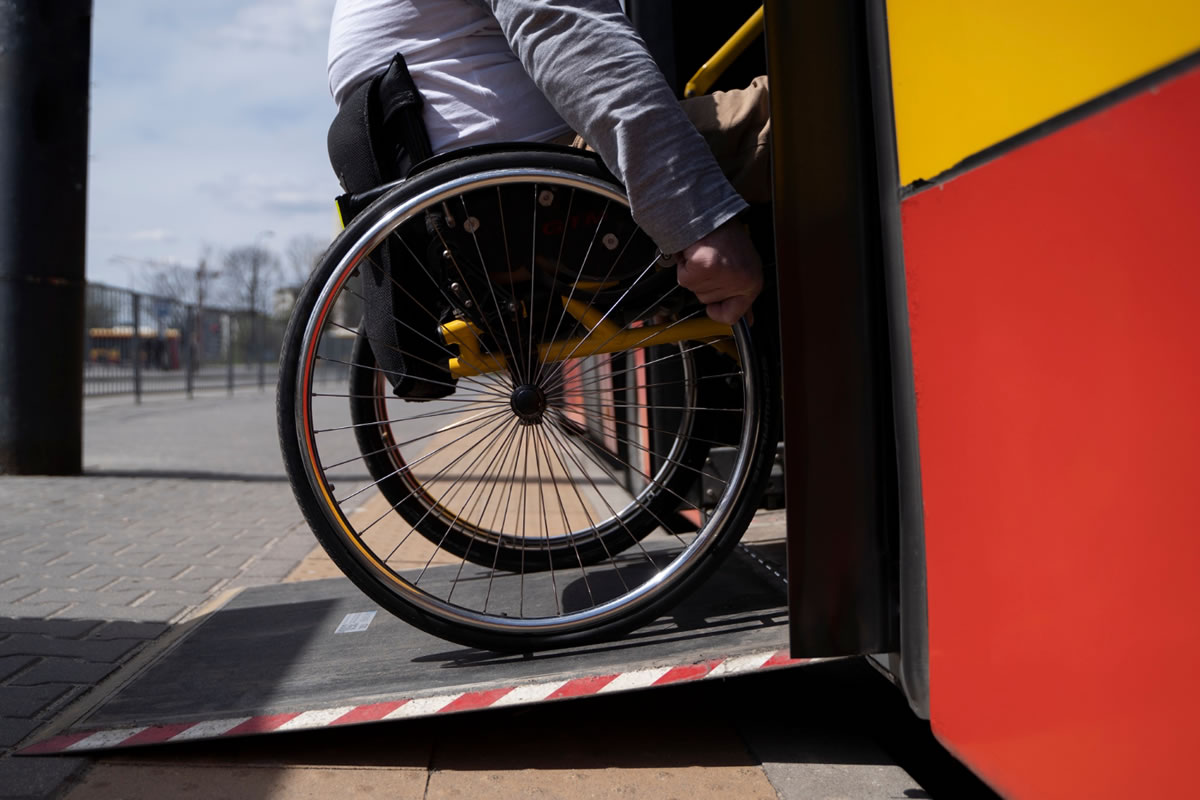
Wheelchairs, crutches, impaired balance, heavy luggage, strollers, young children, up to 40% of public transport users have reduced mobility, and nearly seven percent of the U.S. population lives with an ambulatory disability. Therefore, removing physical barriers is a necessity for their access to public transportation but also a massive challenge for transport operators, especially when the infrastructure is aged. Experts from our wheelchair transportation service in Orlando look at current solutions and services.
What are some physical obstacles faced in public transport?
Picture yourself in front of a 15-inch step operating a wheelchair, extending your trip by half an hour because of a broken elevator, passing the security gates with a large, heavy suitcase, moving down three floors with your stroller and infant in your arms, etc. Decreasing physical barriers in public transportation is a fundamental need for individuals with limited mobility and physical disability.
Here are a handful of examples of physical barriers that you can find in public transportation:
- Unfit stairs
- Significant disparities in height between floors
- Long distances
- Slick floors
- Excessive space between the platform and the automobile
These problems mainly affect people with ambulatory disabilities but can be expanded to all individuals with reduced mobility.
What are solutions to lessen obstacles in public transport for individuals with a physical disability?
Planning is a crucial step to save time and dodge unpleasant surprises. Numerous websites and mobile apps, often unfamiliar to individuals with limited mobility, allow them to discover accessible sites and be informed in real-time of the level of accessibility of infrastructures. Among the best available are wheelmap and access earth.
In addition, most cities like Chicago, Toronto, and London equip users with a travel planner considering the network's accessibility.
Facilities adapted for people with reduced mobility
In the United States, for instance, the Americans with Disabilities Act of 1990 (ADA) is a milestone civil rights law dealing with the rights of persons with disabilities. Title II of the ADA "prohibits discrimination based on disability in public transport such as city buses and public railways". In addition, the regulation imposes specific standards on transport networks, like the provision to furnish disability access in new automobiles and paratransit services to people who cannot use public transportation. In fact, you need to focus on providing a seamless mobility chain for users with a physical disability on your public transport. Some transportation network operators go above legal obligations and address custom-made arrangements for people with motor disabilities.
These are just a few of the limitations that block people with limited mobility from having access to public transportation. Therefore, it is critical to create more opportunities for these individuals to participate in society like everyone else to improve their overall quality of life and allow them access to the places and activities they want to be involved with. Changes can and should be made to current public transportation systems.